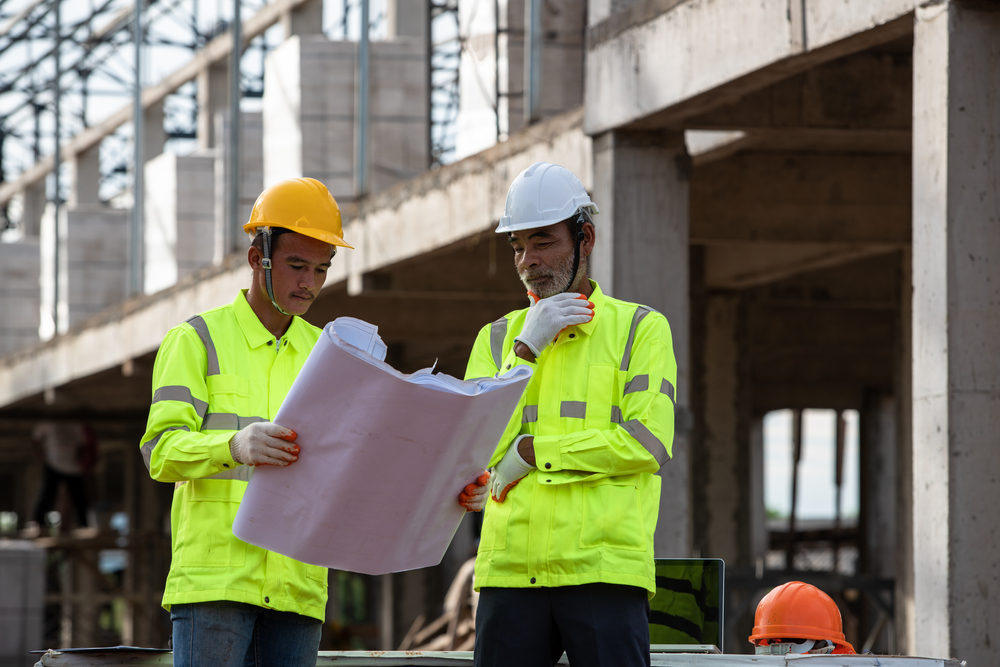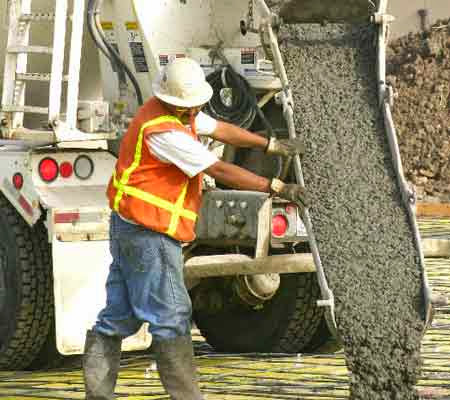The Important Function of Concrete Foundation in Structural Integrity and Long Life
When it comes to constructing a residential or commercial property, the structure is extra crucial than you might assume. Concrete foundations supply unrivaled toughness and resilience, guaranteeing your structure can hold up against numerous environmental obstacles. Without a strong base, you run the risk of prospective problems like shifting or splitting, which can compromise safety and worth. Understanding the subtleties of concrete structures can be the key to maintaining your financial investment for several years to come. So, what should you consider following?
Comprehending the Importance of Concrete Foundations
Concrete structures are crucial to the total stability of any kind of structure, as they supply the important support required to withstand numerous tons and ecological problems. When you assume regarding constructing a home or a commercial room, the foundation is the very first point you need to consider. It serves as an obstacle against wetness, protecting your residential or commercial property from water damages. A well-placed concrete foundation also prevents settling and shifting, which can bring about fractures in wall surfaces and floorings. You'll wish to ensure that the foundation is effectively designed and enhanced, as this affects the durability of your building. Additionally, a solid foundation can boost energy effectiveness by reducing air leaks. Bear in mind, disregarding the relevance of a concrete foundation can bring about costly repair work down the line. Spending in a high quality structure upfront is crucial for the stability and longevity of your structure.
Benefits of Concrete Structures for Structural Honesty
While numerous aspects add to a building's architectural honesty, concrete foundations offer unparalleled longevity and toughness. You'll appreciate that concrete can hold up against extreme climate condition, resisting both moisture and temperature fluctuations. This resilience indicates your framework is much less likely to experience breaking or moving with time, which can compromise its safety.Additionally, concrete's intrinsic weight gives a solid base, stopping activity throughout natural events like earthquakes or floods. When you pick a concrete structure, you're additionally going with low maintenance; unlike wood, it won't rot or draw in insects, saving you money and time in repairs.Moreover, concrete's fire resistance offers included safety, guaranteeing your framework can sustain high temperatures without significant damage. Generally, purchasing a concrete foundation means you're prioritizing the lasting stability and stability of your structure, making it a sensible option for any building project.
Typical Sorts Of Concrete Foundations
When it involves constructing foundations, understanding the typical kinds of concrete structures can help you make notified selections for your project. The most widespread types include slab-on-grade, crawl area, and full basement foundations.A slab-on-grade foundation is an easy, economical option, where a thick concrete slab is put directly on the ground. This type works well in cozy climates, as it reduces heat loss.Crawl space structures boost the home a little above ground, permitting ventilation and accessibility to pipes and electric systems. This design can aid prevent wetness issues.Full cellar foundations use added living or storage space while giving outstanding structural support. They need even more excavation and are commonly made use of in cooler environments to stop frost heave.
Variables to Think About When Creating a Concrete Foundation

Best Practices for Putting Up Concrete Foundations
When you're mounting a concrete structure, appropriate website prep work is vital to guarantee security (West Coast GE Concrete contractors). You'll additionally need to understand reinforcement techniques to enhance strength and toughness. Don't overlook the treating process, as it plays a basic role in attaining a solid structure.
Website Preparation Value
It may appear straightforward, appropriate website preparation is crucial for ensuring a solid and durable concrete foundation. Begin by removing the location of any debris, greenery, or organic product that might endanger the foundation's stability. Next off, assess the soil kind and compaction; you may require to excavate or include products to develop a steady base. Degree the ground to assure also weight circulation and prevent clearing up issues later on. Mounting correct drain systems is additionally vital to stop water build-up, which can damage the structure with time. Mark out the structure's dimensions accurately to assist the pouring process. By following these actions, you'll set the stage for an effective concrete foundation that stands the examination of time.
Support Methods Explained
Once the website is properly prepared, the following action in assuring a strong concrete foundation entails carrying out reliable reinforcement methods. You should begin by utilizing steel rebar, which gives tensile toughness and assists protect against splitting. Lay the rebar in a grid pattern, seeing to it it's elevated using spacers to keep appropriate protection. In addition, take into consideration making use of cord mesh for extra assistance, particularly in locations subject to heavy lots. Don't neglect to tie the rebar junctions securely with cord. For larger foundations, fiber support can enhance sturdiness, minimizing the risk of shrinking cracks. Constantly comply with local building ordinance and standards to ensure compliance. By using these reinforcement methods, you'll substantially increase your structure's strength and long life, laying a strong foundation for your structure.
Treating Process Basics
To guarantee from this source your concrete foundation remedies appropriately, it is necessary to keep appropriate dampness and temperature conditions immediately after putting. Beginning by covering the surface area with a wet burlap or plastic sheeting to maintain dampness. This maintains the concrete hydrated, preventing cracks and making sure stamina. You should likewise keep an eye on the temperature level; ideal healing problems are between 50 ° F and 90 ° F. If it's also hot, haze the surface area consistently to stop fast evaporation. For cold weather condition, take into consideration making use of protecting blankets to preserve heat. Objective for a curing period of at the very least 7 days, as this is crucial for optimal toughness development. By adhering to these best practices, you'll boost your structure's toughness and longevity, making sure structural stability for several years to come.
Maintenance of Concrete Foundations for Longevity
To keep your concrete structure strong and lasting, regular assessments are crucial. You must likewise guarantee reliable drain remedies remain in location to stop water damage. If you spot any kind of cracks, resolving them immediately will save you from bigger problems down the line.

Regular Evaluations and Assessments
While normal inspections and analyses may appear like a chore, they're vital for keeping the integrity of your concrete structure. By routinely looking for splits, changes, or signs of wear, you can catch possible concerns prior to they rise right into costly repair services. Seek any type of water merging around the foundation or unusual settling, as these can indicate underlying problems. It's likewise a good idea to keep track of any kind of modifications in your house's framework, like doors that stick or home windows that don't open smoothly. Maintaining a record of your inspections aids track changes gradually, allowing for aggressive upkeep. Ultimately, these assessments guarantee your structure remains steady, sustaining the longevity and safety and security of your entire framework. Don't overlook this important facet of homeownership!
Efficient Drain Solutions
Routine inspections can expose problems like drainage problems that could compromise your concrete foundation's security. To stop water buildup, guarantee your seamless gutters and downspouts straight water away from the foundation. Installing French drains pipes can properly redirect surface area and groundwater, reducing stress on your foundation walls. In addition, grading the dirt around your home aids ensure that water flows away, instead of pooling near your foundation.Consider making use of sump pumps in locations susceptible to flooding, as they actively remove excess water. Routinely examine for obstructions in water drainage systems and clear them without delay. You'll safeguard your structure's honesty and long life by taking these aggressive steps. Remember, effective drainage options are vital for keeping a strong, resilient concrete foundation.
Motivate Split Services
When you notice splits in your concrete structure, resolving them without delay is essential for preserving its longevity. Tiny cracks can swiftly advance into larger issues, compromising the structural stability of your home. On a regular basis examine your foundation for indicators of damage, such as horizontal or vertical fractures. If you detect any, do not wait-- fix them quickly. You can use epoxy shots or concrete patching substances, which are effective for securing cracks. Constantly follow the maker's guidelines and think about speaking with a professional for substantial damages. Keep in mind, prompt repair services not only improve your foundation's resilience yet likewise conserve you cash over time by protecting against extra considerable repair work down the line. Keep concrete bonding adhesive aggressive, and your structure will certainly stay solid and secure.
Dealing With Common Problems With Concrete Foundations
Concrete foundations can deal with various issues over time, making it critical to determine and resolve them promptly. Among the most usual troubles is splitting, which can happen as a result of temperature level changes or settling dirt. If you see cracks, it's important to evaluate their dimension and depth; little cracks can frequently be secured, while bigger ones might call for specialist evaluation.Water breach is another significant issue. Excess moisture can result in mold and mildew development and Related Site structural deterioration. Assurance proper drainage around your structure to minimize this risk. In addition, look for indications of moving or bowing wall surfaces, as this can show underlying concerns with your structure's stability.Regular assessments are basic to catch these issues early. If you find any kind of worrying signs, don't hesitate to speak with a structure specialist. By staying proactive, you can maintain the stability and longevity of your concrete structure, assuring your home remains risk-free and safe.
Frequently Asked Concerns
Exactly How Does Dirt Kind Affect Concrete Foundation Efficiency?
Dirt type substantially influences concrete foundation performance. If you've obtained expansive clay, as an example, it can create moving and breaking. Sandy dirt may cause resolving. Recognizing your soil helps assure a stable foundation.
Can Concrete Foundations Be Fixed if Harmed?
Yes, you can fix broken concrete foundations. Relying on the degree of the damage, methods like epoxy injection or slab jacking can recover stability. It's best to get in touch with an expert for efficient remedies.
What Is the Common Life-span of a Concrete Foundation?
A concrete structure usually lasts 30 to 100 years, depending upon aspects like soil problems, climate, and maintenance. You'll desire to watch on it to assure it stays healthy throughout its life expectancy.
Are There Option Products to Concrete for Foundations?
Yes, there are alternatives to concrete for structures, like steel, wood, or perhaps recycled materials. Each alternative has distinct advantages and drawbacks, so you ought to consider your project's particular needs when selecting the ideal material.
Exactly How Does Environment Effect Concrete Foundation Toughness?
Climate significantly affects concrete structure sturdiness (West Coast General Engineering commercial concrete Rancho Cucamonga). Severe temperature levels, wetness, and freeze-thaw cycles can damage the material, bring about splits and architectural issues. You ought to take into consideration neighborhood climate conditions when preparing your foundation to ensure long-term performance